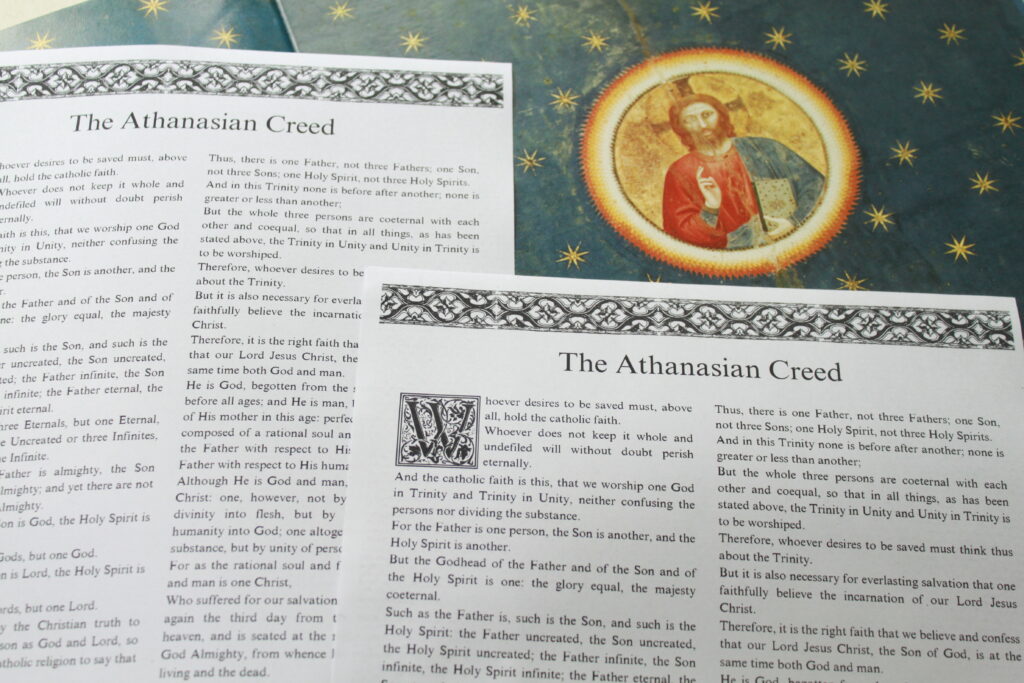
History
As we discussed in our informational post about Trinity Sunday, the focus of the celebration of this day is not on mere doctrine but on the adoration of our Triune God: Father, Son, and Holy Spirit. And it’s hard to imagine anything that more marvelously conveys how important the worship of the Trinity is for the Christian faith than the Athanasian Creed.
Although its authorship has often been attributed to St. Athanasius, who championed trinitarian orthodoxy against his Arian opponents in the fourth century, the creed is now generally considered to have been written after his death in AD 373. Modern scholars tend to think that the creed was first written between the fifth century and seventh century. Some have proposed St. Ambrose of Milan and St. Augustine of Hippo as possible authors for the creed, and whether they wrote it or not, the text displays the influence of their trinitarian theologies.
After its rise to prominence in the Western Church, the Athansian Creed was frequently used in the West as a canticle within the Daily Office. Since then, however, the frequency of its liturgical use has sharply declined.
While this creed may no longer be used as often as the days when it was regularly included in the Church’s daily prayers, the celebration of the Holy Trinity still lives on within the Church throughout the world. This is not only evidenced by the large number of church buildings and congregations dedicated to the Trinity, but the fact that the Sundays succeeding the feast are numbered as Sundays “after Trinity.”
Quicumque vult
While this creed, also known by its Latin title Quicumque vult, was originally said much more often in the Church year, its length and other factors have caused much of the Church to recite it one time a year: on Trinity Sunday. Different traditions have provided for the creed’s use during different services on that day—often during one of the morning prayer offices.
Taking time to recite the Athanasian Creed on Trinity Sunday is a worthy tradition for a variety of reasons. First, the creed is confessionally significant to Lutherans insofar as it is included within the Three Chief Creeds at the beginning of The Book of Concord: the Apostles’ Creed, Nicene Creed, and Athanasian Creed. Yet the creed is not only significant for Lutheran doctrine; it also plays a role in shaping Lutheran piety, as one can see from its inclusion in The Lutheran Hymnal(1941), Lutheran Worship (1982), and the Lutheran Service Book (2006).
It is our hope that you and your family and friends will prolong the Feast of the Holy Trinity by saying the Athanasian Creed not only once a year at church on Trinity Sunday but also frequently within your homes. For that reason we’ve included an illustrated creed card in this post that you can download and use within your own prayer life, helping yourself and others to focus your faith on the praise of our God: the Father, Son, and Holy Spirit.
References:
1. Pfatteicher, Philip H. Journey into the Heart of God. Oxford University Press. 2013.


Are there any specific dishes that were traditionally made for the feast of Holy Trinity? Or any projects to illustrate the Trinity for kiddos?
Thanks so much!